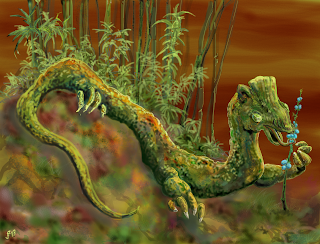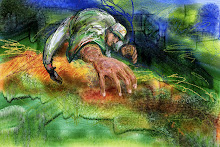Welcome to the 2014-2015 school year, one that began shortly after seeing my first bald eagle. Why would that be significant? I go into the year teaching history for the first time directly in twenty years. Though I am teaching world history, and pre-history, the bald eagle, espied near Mt. Lassen, is a symbol that rings strongly in my soul, for our country, our children and our future.
Now, post sixtieth birthday, I've become more reflective on my practice as an educator, something that I want to model for my students and my own children. I want to take risks as a classroom teacher, while maintaining an environment conducive to learning; a safe place for students to be creative while they learn.
The first big risk will be to create an ongoing opportunity for my students to role-play characters of their own creation, immersed in the time frame of our study. This role-play will encompass both history and language arts as part of not only the Common Core standards, but also the vision and mission of our school district, the NETS (National Educational Technology Society) standards, and the NAEA (National Arts Education Association) standards.
The role-playing will be designed to answer essential questions: "How do humans change?" and "How does language captivate?"
Sunday, September 14, 2014
Saturday, January 18, 2014
Collaboration in a technology rich environment
I teach elective classes in a middle school, grades 6-8, that tend towards project based learning. With the new common core looming in the immediate future, how can we who are sometimes considered on the periphery, or extra, become more involved in the implementation of the common core?
• Paralysis by reflection
More reading and writing is going to become prevalent in history, science and language arts, particularly around reference texts. Narrative is emphasized less in the new standards. Many teachers are responding to the need for more language arts with reflections on learning, a facet of the new common core as well.
CCSS.ELA-Literacy.W.5.10 Write routinely over extended time frames (time for research, reflection, and revision) and shorter time frames (a single sitting or a day or two) for a range of discipline-specific tasks, purposes, and audiences.
Teachers like me, who teach classes where creative products are central to student learning, are being asked to use the reflection method to show evidence of learning, and writing. At our site, I am the only electives teacher with a degree in English, whereas most art and music, physical education as well, are not trained to assess writing. How can we balance this and keep the response to creativity authentic and meaningful? I was disappointed in my students' reflective response on a recent project, and realized, it is not them, it was my prompt to blame.
• Commentary over time
One way to build in reflection, without calling it that (students smell a reflection a mile away), is to create an opportunity to show growth over time. As students draw, or film, or work in a music editing application, stop them, and have them take a screen shot, or use a cell phone to capture their progress. Do this periodically, a couple of times a week until it becomes routine. Ask students to share their feelings about their progress with each other in small groups, showing evidence with their series of images/recordings. This elicits a more honest appraisal, and a chance for students to take risks and learn from mistakes, exercising the "grit" muscle that is all the rage in education today.
• Passion
What do you like about your work? Students enjoy being creative, and often don't get a chance to talk about their passion. Why not give students more of an opportunity to be passionate about why they are doing something creative, or recognizing the skill and creativity of their peers? Again, with evidence available over time, students can cite specific instances of where there "ah-ha" moments happen. And, of course, it doesn't have to be in writing. Recording a short video or audio statement; or interviewing a peer, or you as a teacher recording and documenting a small group discussion of laudatory commentary is equally effective.
In the image here, I was trying to incorporate both texture, and layering using Adobe Photoshop Elements working in parallel with my students. I scanned around the image looking for sections that I really liked, and took screen shots of them. I then intend to rework these three shots more with additional layers.
• Paralysis by reflection
More reading and writing is going to become prevalent in history, science and language arts, particularly around reference texts. Narrative is emphasized less in the new standards. Many teachers are responding to the need for more language arts with reflections on learning, a facet of the new common core as well.
CCSS.ELA-Literacy.W.5.10 Write routinely over extended time frames (time for research, reflection, and revision) and shorter time frames (a single sitting or a day or two) for a range of discipline-specific tasks, purposes, and audiences.
Teachers like me, who teach classes where creative products are central to student learning, are being asked to use the reflection method to show evidence of learning, and writing. At our site, I am the only electives teacher with a degree in English, whereas most art and music, physical education as well, are not trained to assess writing. How can we balance this and keep the response to creativity authentic and meaningful? I was disappointed in my students' reflective response on a recent project, and realized, it is not them, it was my prompt to blame.
• Commentary over time
One way to build in reflection, without calling it that (students smell a reflection a mile away), is to create an opportunity to show growth over time. As students draw, or film, or work in a music editing application, stop them, and have them take a screen shot, or use a cell phone to capture their progress. Do this periodically, a couple of times a week until it becomes routine. Ask students to share their feelings about their progress with each other in small groups, showing evidence with their series of images/recordings. This elicits a more honest appraisal, and a chance for students to take risks and learn from mistakes, exercising the "grit" muscle that is all the rage in education today.
• Passion
What do you like about your work? Students enjoy being creative, and often don't get a chance to talk about their passion. Why not give students more of an opportunity to be passionate about why they are doing something creative, or recognizing the skill and creativity of their peers? Again, with evidence available over time, students can cite specific instances of where there "ah-ha" moments happen. And, of course, it doesn't have to be in writing. Recording a short video or audio statement; or interviewing a peer, or you as a teacher recording and documenting a small group discussion of laudatory commentary is equally effective.
In the image here, I was trying to incorporate both texture, and layering using Adobe Photoshop Elements working in parallel with my students. I scanned around the image looking for sections that I really liked, and took screen shots of them. I then intend to rework these three shots more with additional layers.
Friday, September 6, 2013
2013 School Year Underway
This is going to be an interesting year. I've been teaching for over 20 years, and this year I turn 60. Thoughts turn to what one does next. Education is going through a huge transition with the continued advances in technology, and the nation-wide adoption of the Common Core Standards. How will your site/district/community deal with test scores lower than what the public is used to with standardized testing? How will educators adjust to a mandate to incorporate technology into teaching and learning, even if access is limited? How do we, as educators, maintain the enthusiasm and freedom of creativity while protecting our rights as teachers to take risks with curriculum and pedagogy?
I have been inspired this summer by the likes of Bobby Chiu, Steve Silver, Scott Robertson, Sparth and Nick Pugh. Take a look at these artists, and look at the ways they are giving back, (especially Bobby and Steve). How should I give back is what drives me these days.
I have been inspired this summer by the likes of Bobby Chiu, Steve Silver, Scott Robertson, Sparth and Nick Pugh. Take a look at these artists, and look at the ways they are giving back, (especially Bobby and Steve). How should I give back is what drives me these days.
 |
| Exoterran newt- Painter 11, Photoshop CS5- Jeff Brain |
Monday, December 10, 2012
Great deal from Plasq
Plasq, makers of ComicLife, continues to make strong statements in education. Recently, they offered a 25% discount on their already incredibly low priced products when partnering with the My Hero project. My Hero is a wonderful organization well worth exploring, as is Comic Life. I use Comic Life in the classroom to teach digital citizenship, and will be expanding my use into other projects.
Here are links to these two fantastic groups:
http://plasq.com/
Saturday, November 17, 2012
Curriculum design in the 21st century continues to be a moving target. As we combine best pedagogical practices with ever more amazing and powerful tools in a media drenched age, it becomes increasingly more challenging to focus on student learning in specific and focused ways.
This image is inspired by the thought of one of my digital super villains creating a virus that is personified on the net by dragon iconography. I am finding that the digital citizenship/comics creation unit I am growing is the most satisfying work of my teaching career. Its combination of personal passion and deep teaching opportunities inspires me every day I get to work with it.
Monday, April 16, 2012
Writing on the Wall

I teach a digital citizenship unit inspired by my work in collaboration with Common Sense Media. In this unit, I posit a near future time where my students are transformed (sometimes I say how, for instance, a nanobiology accident…) into superheroes to combat digital villainy taken to an extraordinary level. Here is my vision of a virus attacking raw code in the virtual environment of software language. I call it "Writing on the Wall".
Saturday, February 25, 2012
Deep into the New Year


Deep into the New Year
February finds us over the 100 day mark in the school year, a time when potential doldrums hit both teacher and student. How are we fighting off the mid-year "blahs"?
I make sure that my classroom is working on their most exciting project to date, and throw more multimedia into the mix, video teases, podcast nuggets, etc. It is never too early to consider what one is going to showcase for parent visitations (Open House) and how one will display student learning.
I've been inspired by my students at SFSU and my colleagues to continue to risk new ideas and curriculum, even as I approach the twilight of my career. Shout out to you folks.
The "360" project is a prime example. Inspired by the work of San Francisco artist, Pep Ventosa, I asked students to take at least 30 digital photos using themselves as the subject, and layer them in Adobe Photoshop Elements. The results were spectacular:
Subscribe to:
Comments (Atom)





